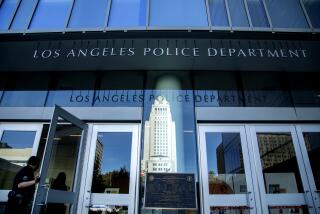People Working Together Is the Cure for Crime
The price of a safe community got dearer last month with the shooting death of a Northridge apartment security manager who confronted the drug dealers and thugs who terrorize his residents. Pedro Banegas was stalked and gunned down as he left an English class at Reseda High School. Police suspect the killer targeted Banegas, a 42-year-old Honduran immigrant and father of two, in retaliation for his aggressive tactics policing the notoriously tough 466-unit Park Parthenia Apartments.
As security chief of the low-rent apartments, Banegas was well known for his tough stance against gang members and drug dealers. He confronted them outright, earning both admirers and critics in the complex. Banegas also served as block captain for the complex’s Neighborhood Watch group and police credited him with helping to reduce crime in the area. That’s what makes his killing all the more reprehensible.
In recent years, more and more neighborhood activists have had their efforts rewarded with harassment or outright violence as they deprive criminals of a livelihood. But those targeted are often fighting lonely battles with little help from neighbors or have stepped over the line of sensible behavior. For most of the 4,000 block captains working with Los Angeles police in the San Fernando Valley, though, the benefits of shooing away criminals far outweigh the risks.
Neighborhood Watch efforts work because they enjoy the support of the entire community. Neighbors watch each other’s backs and each other’s homes. No one stands out as a lone crime fighter because everyone accepts responsibility. Criminals can sense a lack of neighborhood resolve and move quickly to isolate and intimidate holdouts. Three years ago in North Hollywood, for instance, an anti-gang crusader was harassed repeatedly by gang members who knew she had little help from neighbors. Bad guys can pick on individuals, but they are no match for an entire community.
Acting sensibly is key. Effective Neighborhood Watch groups complement police by watching their communities for strange cars or simply by knowing which kid belongs in which house--and which ones don’t belong at all. But residents should never try to act like police officers. When they do, trouble isn’t far behind. Some say that’s what Banegas did, that he got a little too aggressive in confronting drug dealers and gang members.
If, as police suspect, Banegas died because of his valiant fight, the lesson of his death should be that the need for dedicated people like him is greater than ever. Criminals are cowards who prefer the shadows, and they strike at those who would expose them. Individually, it’s a dangerous undertaking. Together, though, residents working with police can force the evil out of neighborhood after neighborhood until there is nowhere left for it to hide.
More to Read
Sign up for Essential California
The most important California stories and recommendations in your inbox every morning.
You may occasionally receive promotional content from the Los Angeles Times.









